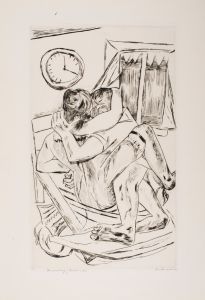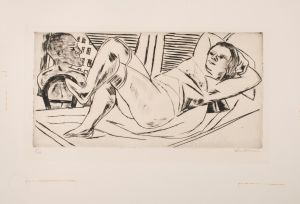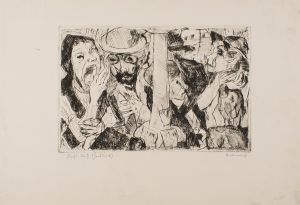
Portrait of Mrs. Swarzenski
A hand-painted replica of Max Beckmann’s masterpiece Portrait of Mrs. Swarzenski, meticulously crafted by professional artists to capture the true essence of the original. Each piece is created with museum-quality canvas and rare mineral pigments, carefully painted by experienced artists with delicate brushstrokes and rich, layered colors to perfectly recreate the texture of the original artwork. Unlike machine-printed reproductions, this hand-painted version brings the painting to life, infused with the artist’s emotions and skill in every stroke. Whether for personal collection or home decoration, it instantly elevates the artistic atmosphere of any space.
Max Beckmann's "Portrait of Mrs. Swarzenski" is a notable work by the German painter, who is recognized for his contributions to the Expressionist movement. Beckmann, born in 1884 in Leipzig, Germany, is renowned for his distinctive style that often combines elements of realism with expressive, bold forms and colors. His works frequently explore themes of human experience, often reflecting the tumultuous socio-political landscapes of his time.
The painting "Portrait of Mrs. Swarzenski" was created during a period when Beckmann was gaining significant recognition for his portraiture. Beckmann's portraits are known for their psychological depth and the way they capture the essence of the sitter, often revealing more than just their physical appearance. This particular portrait is believed to depict Mrs. Swarzenski, though specific details about her identity and her relationship with Beckmann are not extensively documented in public records.
Beckmann's technique in this portrait, as in many of his works, likely involves a combination of oil paints applied with a confident, sometimes heavy hand, creating a rich texture and depth. His use of color is often striking, with a palette that can range from somber to vibrant, depending on the emotional tone he wishes to convey. Beckmann's portraits are characterized by their strong lines and the way they often seem to capture a moment of introspection or contemplation in the sitter.
The period during which Beckmann painted "Portrait of Mrs. Swarzenski" was marked by significant personal and professional challenges. The rise of the Nazi regime in Germany had a profound impact on Beckmann's life and work. His art was labeled "degenerate" by the Nazis, leading to his dismissal from his teaching position at the Städelschule in Frankfurt and the removal of his works from German museums. This period of adversity, however, did not stifle his creativity; rather, it seemed to intensify the emotional power of his work.
Beckmann's portraits from this era often reflect a sense of tension and complexity, possibly mirroring the artist's own experiences and the broader societal upheavals of the time. The "Portrait of Mrs. Swarzenski" fits within this context, offering viewers a glimpse into the nuanced and often turbulent world that Beckmann inhabited.
Max Beckmann eventually emigrated to the United States in 1947, where he continued to paint and teach until his death in 1950. His legacy as a master of modern art endures, with his works held in high esteem and featured in major museums and collections worldwide.
While specific details about "Portrait of Mrs. Swarzenski" may be limited, the painting remains an important part of Beckmann's oeuvre, exemplifying his skill in capturing the human condition through portraiture. Beckmann's ability to convey the inner life of his subjects ensures that his portraits continue to resonate with audiences, offering insights into both the individuals he painted and the broader historical context in which he worked.


















